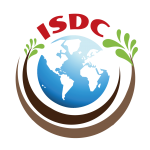投稿主題
投稿主題請參考以下內容,但不限制於以下主題
生態復育
Ecological Restoration
自然生態系統以食物,燃料和木材等資源的形式提供服務;空氣和水的淨化;廢物的排毒和分解;氣候調節;土壤肥力的再生;和農作物的授粉。估計這些生態系統過程每年價值數万億美元。科學界已經達成共識,目前環境的退化和地球上許多生物群的破壞都是在“災難性的短時間內”發生的。生境的喪失是物種滅絕和生態系統服務下降的主要原因。已經確定了兩種方法,即保護當前可行的棲息地和恢復退化的棲息地,以減緩物種滅絕速度和生態系統服務的下降。近年來,生態修復(ER)的商業應用呈指數增長。聯合國大會(2019)宣布2021年至2030年為聯合國生態系統恢復十年。
ER是該過程的學術研究,而生態恢復是恢復從業者的實際項目或過程。國際生態恢復學會將“生態恢復”定義為“在生態系統的健康,完整性和可持續性方面啟動或加速生態系統恢復的有意活動”。 ER包括範圍廣泛的項目,包括侵蝕控制,重新造林,清除非本地物種和雜草,對受干擾地區進行植被恢復,採光,重新引入本地物種(最好是具有本地適應性的本地物種)以及改善生境和範圍目標物種。 ER借鑒了廣泛的生態概念,例如:干擾,演替,破碎,生態系統功能,社區聚集和種群遺傳學。 ER具有多種應用,其中包括:控制物種入侵,廢水淨化,空氣的過濾和淨化,食品安全,採購用於修復的材料。恢復生態系統的原因很多,即使用ER。其中包括:恢復諸如飲用水或野生動植物種群之類的自然資本,幫助人類社區及其賴以生存的生態系統適應氣候變化的影響(通過基於生態系統的適應),緩解氣候變化(例如通過碳固存)。出於審美原因,協助受威脅或瀕臨滅絕的物種。此外,還有道德方面的原因,例如:人為乾預不自然地破壞了許多棲息地,並且有天生的義務要恢復這些被破壞的棲息地,以規範使用/收穫,特別是為了維持生存,本地生態系統與土著人民的文化相關性,環境附近人群的健康狀況。我們將特別關注ER的進步和挑戰,因為ER的概念和目標,方法論方法,“一站式”健康概念以及行業和社會的實際應用以及在學術界,司法管轄區,以及像建築師和景觀工程師這樣的從業者。 參考文獻
ER是該過程的學術研究,而生態恢復是恢復從業者的實際項目或過程。國際生態恢復學會將“生態恢復”定義為“在生態系統的健康,完整性和可持續性方面啟動或加速生態系統恢復的有意活動”。 ER包括範圍廣泛的項目,包括侵蝕控制,重新造林,清除非本地物種和雜草,對受干擾地區進行植被恢復,採光,重新引入本地物種(最好是具有本地適應性的本地物種)以及改善生境和範圍目標物種。 ER借鑒了廣泛的生態概念,例如:干擾,演替,破碎,生態系統功能,社區聚集和種群遺傳學。 ER具有多種應用,其中包括:控制物種入侵,廢水淨化,空氣的過濾和淨化,食品安全,採購用於修復的材料。恢復生態系統的原因很多,即使用ER。其中包括:恢復諸如飲用水或野生動植物種群之類的自然資本,幫助人類社區及其賴以生存的生態系統適應氣候變化的影響(通過基於生態系統的適應),緩解氣候變化(例如通過碳固存)。出於審美原因,協助受威脅或瀕臨滅絕的物種。此外,還有道德方面的原因,例如:人為乾預不自然地破壞了許多棲息地,並且有天生的義務要恢復這些被破壞的棲息地,以規範使用/收穫,特別是為了維持生存,本地生態系統與土著人民的文化相關性,環境附近人群的健康狀況。我們將特別關注ER的進步和挑戰,因為ER的概念和目標,方法論方法,“一站式”健康概念以及行業和社會的實際應用以及在學術界,司法管轄區,以及像建築師和景觀工程師這樣的從業者。 參考文獻
- Jørgensen,D.(2015年)。生態恢復是國際生物多樣性政策的目標,指標和工具。生態與社會20(4):43。
- Wiegleb,G,Dahms,H-U,Byeon,W.I.和Choi,G.(2017)。人工濕地可以在多大程度上增強生物多樣性?國際環境科學與發展雜誌8(8):561-569。
- Wiegleb G,BröringU,Choi G,Dahms H-U,Kanongdate K,Byeon C-W,Ler LG。 (2013)。生態恢復是預防措施,而不是恢復原狀的補償。生物多樣性與保護22(9):1931-1948。
- https://www.unenvironment.org/news-and-stories/press-release/new-un-decade-ecosystem-restoration-offers-unparalleled-機會。
Natural ecosystems provide services in the form of resources such as food, fuel, and timber; the purification of air and water; the detoxification and decomposition of wastes; the regulation of climate; the regeneration of soil fertility; and the pollination of crops. These ecosystem processes have been estimated to be worth trillions of dollars annually. There is consensus in the scientific community that the current environmental degradation and destruction of many of the Earth’s biota is taking place on a “catastrophically short timescale”. Habitat loss is the leading cause of both species extinctions and ecosystem service decline. Two methods, the conservation of currently viable habitat, and the restoration of degraded habitat, have been identified to slow the rate of species extinction and ecosystem service decline. The commercial applications of ecological restoration (ER) have increased exponentially in recent years. The United Nations General Assembly (2019) declared 2021 – 2030 the UN Decade on Ecosystem Restoration.
ER is the academic study of the process, whereas ecological restoration is the actual project or process by restoration practitioners. The International Society for Ecological Restoration defines “ecological restoration” as an “intentional activity that initiates or accelerates the recovery of an ecosystem with respect to its health, integrity and sustainability”. ER includes a wide scope of projects including erosion control, reforestation, removal of non-native species and weeds, revegetation of disturbed areas, daylighting streams, reintroduction of native species (preferably native species that have local adaptation), and habitat and range improvement for targeted species. ER draws on a wide range of ecological concepts, such as: Disturbance, Succession, Fragmentation, Ecosystem functioning, Community assembly, and Population genetics. ER has several applications, among several others in: controlling species invasions, waste water purification, filtration and purification of air, food safety, sourcing material for restoration. There are many reasons to restore ecosystems, i.e. for applications of ER. These include: Restoring natural capital such as drinkable water or wildlife populations, helping human communities and the ecosystems upon which they depend to adapt to the impacts of climate change (through ecosystem-based adaptation), mitigating climate change (e.g. through carbon sequestration). Assisting threatened or endangered species, aesthetic reasons. Furthermore, there are ethic reasons, such as: human intervention has unnaturally destroyed many habitats, and there exists an innate obligation to restore these destroyed habitats to regulate the use/harvest, particularly for subsistence, cultural relevance of native ecosystems to Native people, environmental health of nearby populations. We will focus particularly on the advances and challenges in ER that holds for its conceptualization and aims, methodological approaches, practical applications in the One Health concept as well as for industries and society, and its sustainable implementation in a joint effort of academia, jurisdiction, and practitioners like architects and landscape engineers. References
ER is the academic study of the process, whereas ecological restoration is the actual project or process by restoration practitioners. The International Society for Ecological Restoration defines “ecological restoration” as an “intentional activity that initiates or accelerates the recovery of an ecosystem with respect to its health, integrity and sustainability”. ER includes a wide scope of projects including erosion control, reforestation, removal of non-native species and weeds, revegetation of disturbed areas, daylighting streams, reintroduction of native species (preferably native species that have local adaptation), and habitat and range improvement for targeted species. ER draws on a wide range of ecological concepts, such as: Disturbance, Succession, Fragmentation, Ecosystem functioning, Community assembly, and Population genetics. ER has several applications, among several others in: controlling species invasions, waste water purification, filtration and purification of air, food safety, sourcing material for restoration. There are many reasons to restore ecosystems, i.e. for applications of ER. These include: Restoring natural capital such as drinkable water or wildlife populations, helping human communities and the ecosystems upon which they depend to adapt to the impacts of climate change (through ecosystem-based adaptation), mitigating climate change (e.g. through carbon sequestration). Assisting threatened or endangered species, aesthetic reasons. Furthermore, there are ethic reasons, such as: human intervention has unnaturally destroyed many habitats, and there exists an innate obligation to restore these destroyed habitats to regulate the use/harvest, particularly for subsistence, cultural relevance of native ecosystems to Native people, environmental health of nearby populations. We will focus particularly on the advances and challenges in ER that holds for its conceptualization and aims, methodological approaches, practical applications in the One Health concept as well as for industries and society, and its sustainable implementation in a joint effort of academia, jurisdiction, and practitioners like architects and landscape engineers. References
- Jørgensen, D. (2015). Ecological restoration as objective, target, and tool in international biodiversity policy. Ecology and Society 20(4):43.
- Wiegleb, G, Dahms, H-U, Byeon, W.I. and Choi, G. (2017). To what extent can constructed wetlands enhance biodiversity? International Journal of Environmental Science and Development 8 (8): 561-569.
- Wiegleb G, Bröring U, Choi G, Dahms H-U, Kanongdate K, Byeon C-W, Ler LG. (2013). Ecological restoration as precaution and not as restitutional compensation. Biodiversity and Conservation 22 (9): 1931-1948.
- https://www.unenvironment.org/news-and-stories/press-release/new-un-decade-ecosystem-restoration-offers-unparalleled-opportunity.
會議目標
Goals and objectives of the session
會議將重點討論生態恢復的跨學科和跨學科研究。我們的目標是針對生態修復[ER]的四個主要問題提供廣泛的研究成果。
- 描述,測量和分析ER的理論方法。
- 方法-操作方面的進展:從景觀工程到資源修復(例如水土生物修復)
- 從ER研究到實現景觀和城市規劃的跨學科方法。
- 自然和城市生態系統的可持續管理。
The session will focus on inter- and transdisciplinary research on ecological restoration. Our objective is to provide a broad set of research contributions covering four major issues of Ecological Restoration [ER].
- Theoretical approaches to describe, measure and analyze ER.
- Methodological-operational advances: from landscape engineering to resource remediation (e.g. bioremediation of soil and water)
- Transdisciplinary approaches from ER research towards realization of landscape and urban planning.
- Sustainable management of natural and urban ecosystems.
主題會議主持人

孫元勳 教授
Yuan-Hsun Sun professor
- 稀有鳥類生態與管理
謝季吟 教授
Chi-Ying Hsieh professor
- 環境化
- 環境分析
- 生物毒性檢測
- 生態監測與評估

